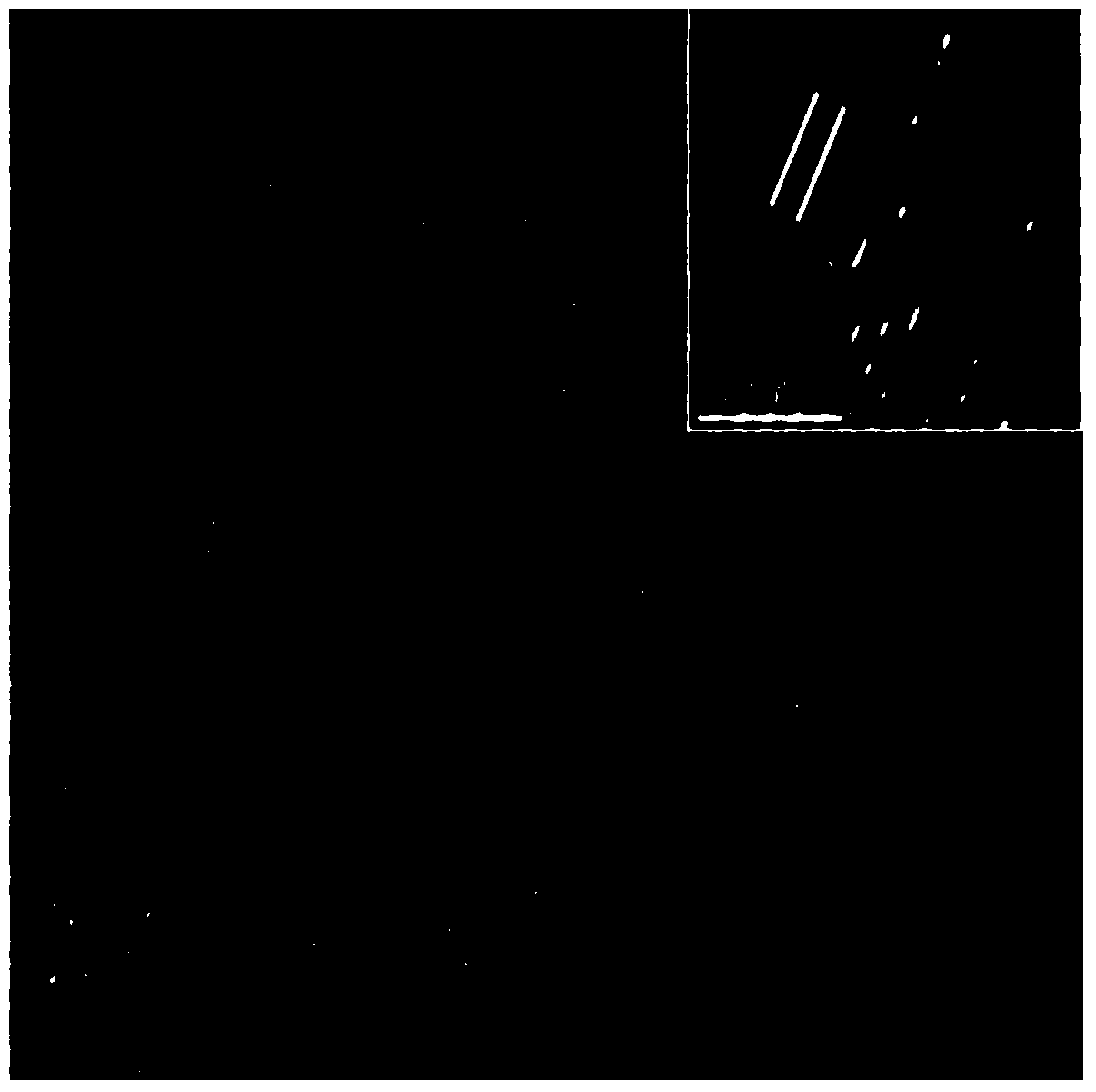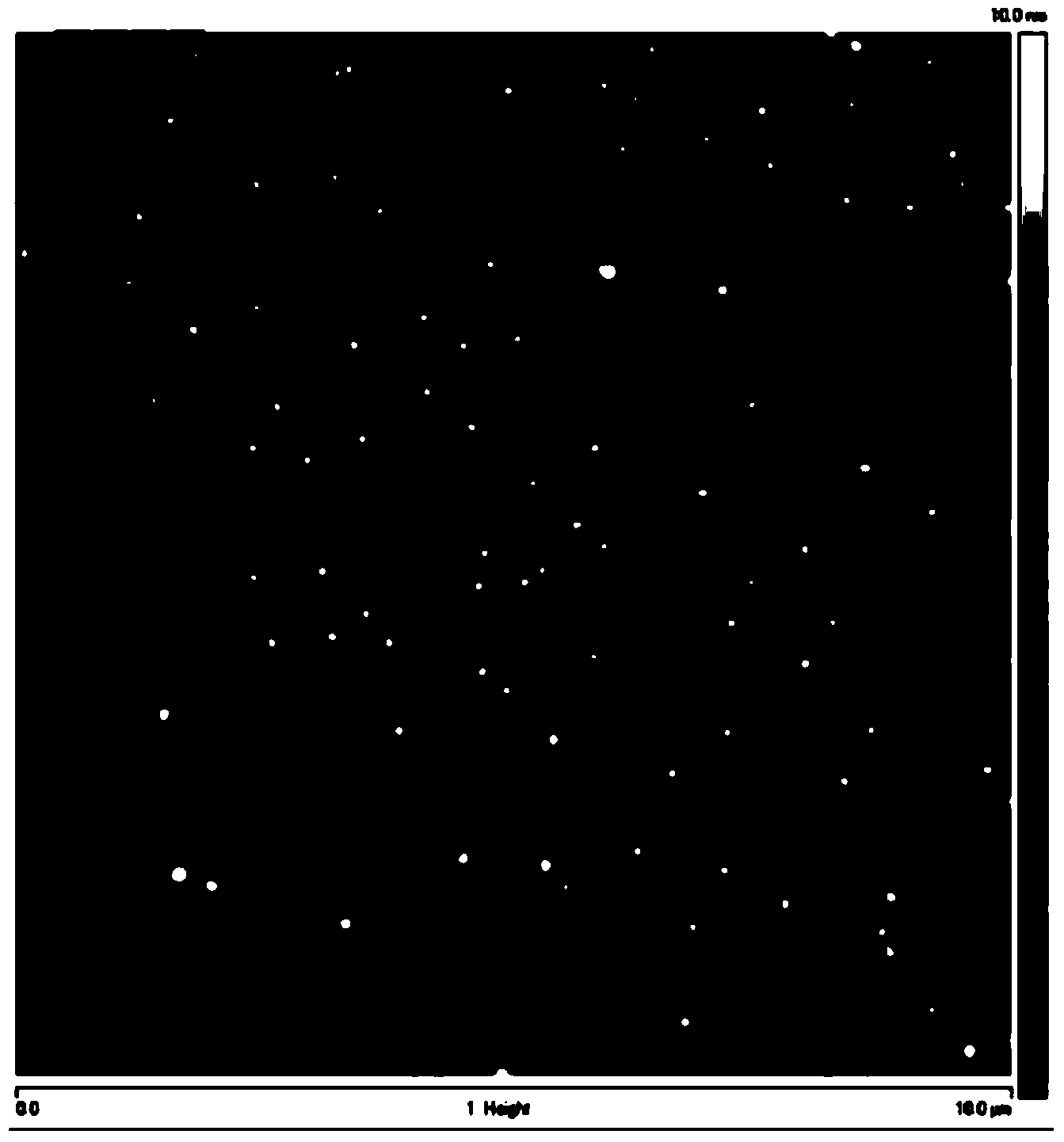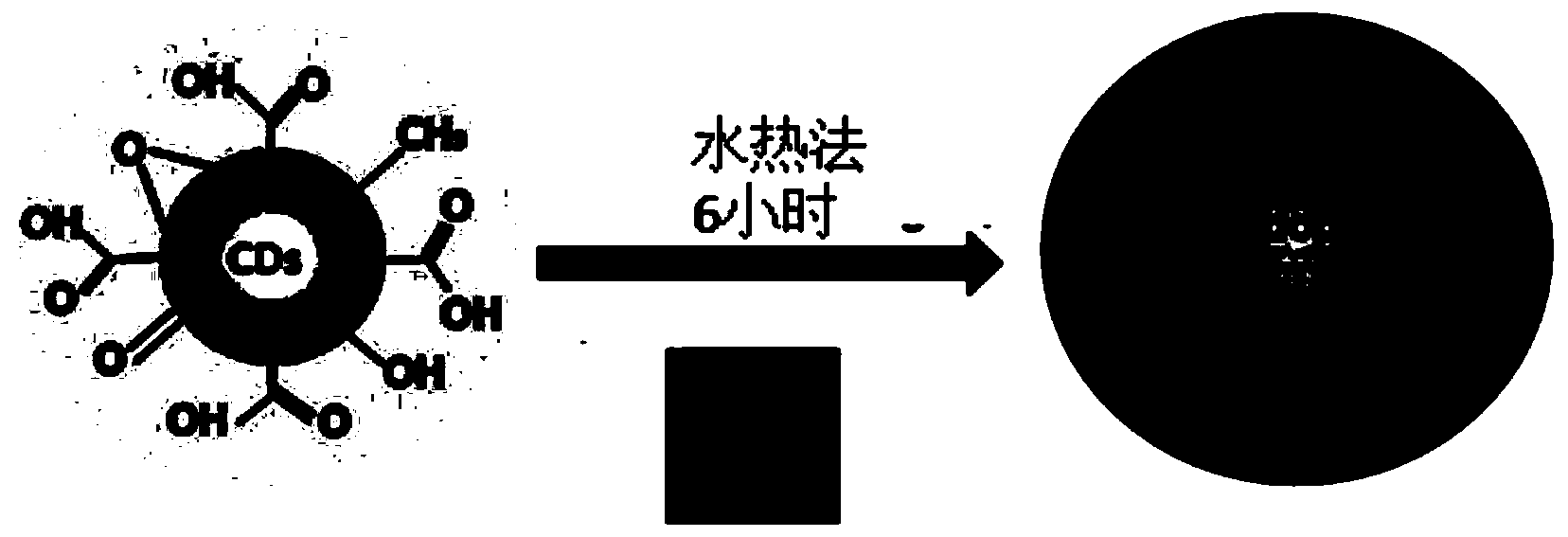Nitrogen-doped high-luminescent carbon quantum dot and preparation method thereof
A technology of carbon quantum dots and luminescence, which is applied in the field of nanomaterials, can solve the problems of non-fluorescent carbon nanoparticles with poor fluorescence performance and carbon quantum dots, and achieve the effects of short preparation cycle, uniform size distribution and good repeatability
- Summary
- Abstract
- Description
- Claims
- Application Information
AI Technical Summary
Problems solved by technology
Method used
Image
Examples
preparation example Construction
[0041] A preparation method of nitrogen-doped highly luminescent carbon quantum dots, comprising the following steps:
[0042] (1) With the sodium citrate solution of 0.2-1.0mol / L as carbon source, then add ethylenediamine solution, dissolve and obtain precursor solution, the volume ratio of described sodium citrate solution and described ethylenediamine solution is 100 :0.5-5;
[0043] (2) Place the precursor solution obtained in step (1) in a polytetrafluoroethylene-lined stainless steel autoclave, seal it and react at 100-300°C for 3 hours or more, and cool to room temperature to obtain a suspension;
[0044] (3) using a cylindrical membrane separation filter to separate the suspension obtained in step (2);
[0045] (4) vacuum drying the separated solution obtained in step (3) to obtain the nitrogen-doped highly luminescent carbon quantum dots.
[0046] The specific implementation and results are as follows.
Embodiment 1
[0048] (a) Take 25ml of 0.5mol / L sodium citrate solution, add 300 μL of ethylenediamine, and stir thoroughly for 5 minutes to obtain a precursor solution;
[0049] (b) Place the obtained precursor solution in a 50ml polytetrafluoroethylene-lined stainless steel autoclave, seal it and react at a temperature of 180°C for 6h, and cool it naturally to room temperature to obtain a suspension;
[0050] (c) Filter the suspension with a cylindrical membrane separation filter with a molecular weight cut-off of 3 kDa, collect the filtrate, and dry to obtain a nitrogen-doped carbon quantum dot with high photoluminescence intensity. The carbon quantum dots obtained in this example have a luminous intensity of 867a.u. under the irradiation of 450nm light.
[0051] See attached figure 1 , which is the transmission electron microscope image of the nitrogen-doped fluorescent carbon quantum dots prepared in this example, from figure 1 It can be seen that the lattice spacing is about 32nm, refl...
Embodiment 2
[0056] (a) Take 25ml of 0.5mol / L sodium citrate solution, add 600 μL of ethylenediamine, and stir thoroughly for 5 minutes to obtain a precursor solution;
[0057] (b) Place the obtained precursor solution in a 50ml polytetrafluoroethylene-lined stainless steel autoclave, seal it and react at a temperature of 180°C for 6h, and cool naturally to room temperature to obtain a suspension;
[0058] (c) Filter the suspension with a cylindrical membrane separation filter with a molecular weight cut-off of 3 kDa, collect the filtrate, and dry to obtain a nitrogen-doped carbon quantum dot with high photoluminescence intensity. The carbon quantum dots obtained in this example have a luminous intensity of 852a.u. under the irradiation of 450nm light.
[0059] See attached Figure 10 , which is the change curve of the luminous intensity of the nitrogen-doped fluorescent carbon quantum dots prepared in this example after being treated with hydrogen peroxide. The purpose of adding hydroge...
PUM
| Property | Measurement | Unit |
|---|---|---|
| size | aaaaa | aaaaa |
Abstract
Description
Claims
Application Information
 Login to View More
Login to View More - R&D
- Intellectual Property
- Life Sciences
- Materials
- Tech Scout
- Unparalleled Data Quality
- Higher Quality Content
- 60% Fewer Hallucinations
Browse by: Latest US Patents, China's latest patents, Technical Efficacy Thesaurus, Application Domain, Technology Topic, Popular Technical Reports.
© 2025 PatSnap. All rights reserved.Legal|Privacy policy|Modern Slavery Act Transparency Statement|Sitemap|About US| Contact US: help@patsnap.com



